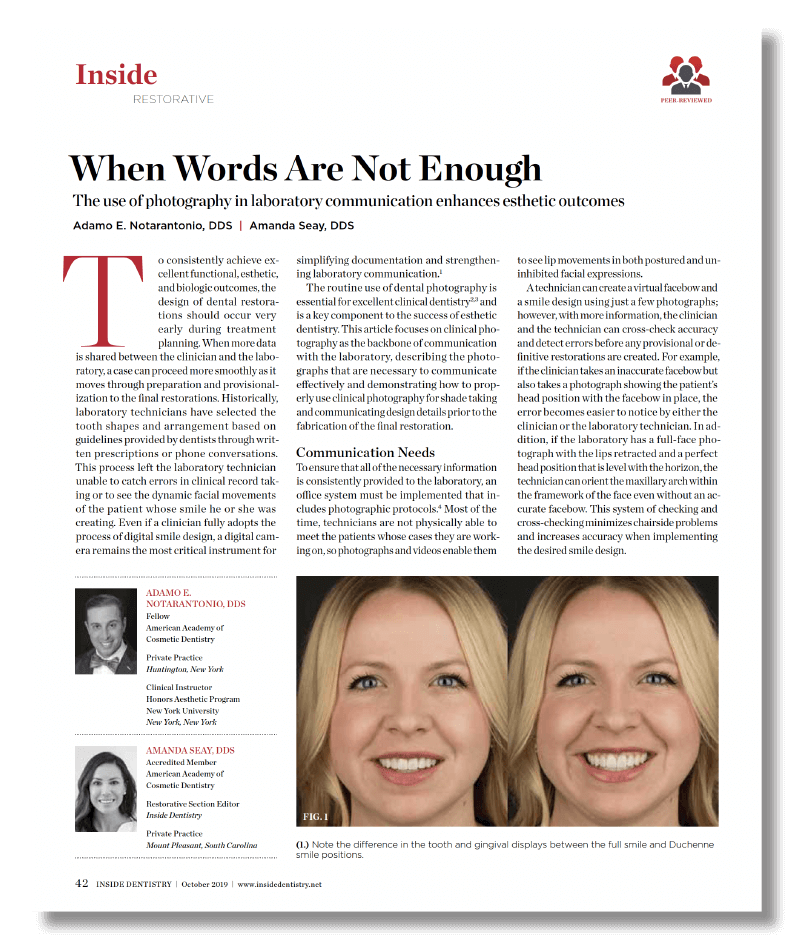Resources | Articles And Downloads
Back
When Words Are Not Enough
To consistently achieve excellent functional, esthetic, and biologic outcomes, the design of dental restorations should occur very early during treatment planning. When more data is shared between the clinician and the laboratory, a case can proceed more smoothly as it moves through preparation and provisionalization to the final restorations. Historically, laboratory technicians have selected the tooth shapes and arrangement based on guidelines provided by dentists through writ-ten prescriptions or phone conversations. This process left the laboratory technician unable to catch errors in clinical record taking or to see the dynamic facial movements of the patient whose smile he or she was creating.
 Download
Download
Reference: Notarantonio AE, Seay A. When Words Are Not Enough. Inside Dentistry. 2019;15(10): 42-50.
Source: When words are not enough
Other Articles And Downloads

It Should Never Be All or Nothing
Composite artistry provides patients with a cost-effective alternative to porcelain.
READ
Can Indirect Restorations Be Produced With the Same Level of Quality Without Using Digital Technology?
Whether or not digital tools are used in treatment, the critical foundations of quality clinical practice remain the same. Dentists must have the experience and wisdom to determine the correct diagnosis and appropriate clinical endpoint.
READ
Adopting Stronger Flowable Composites
For many clinicians, a strong, flowable composite was not available when they first started practicing. “When we were initially using flowable composites, I was trying to use as little as possible on my restorations.”
READ